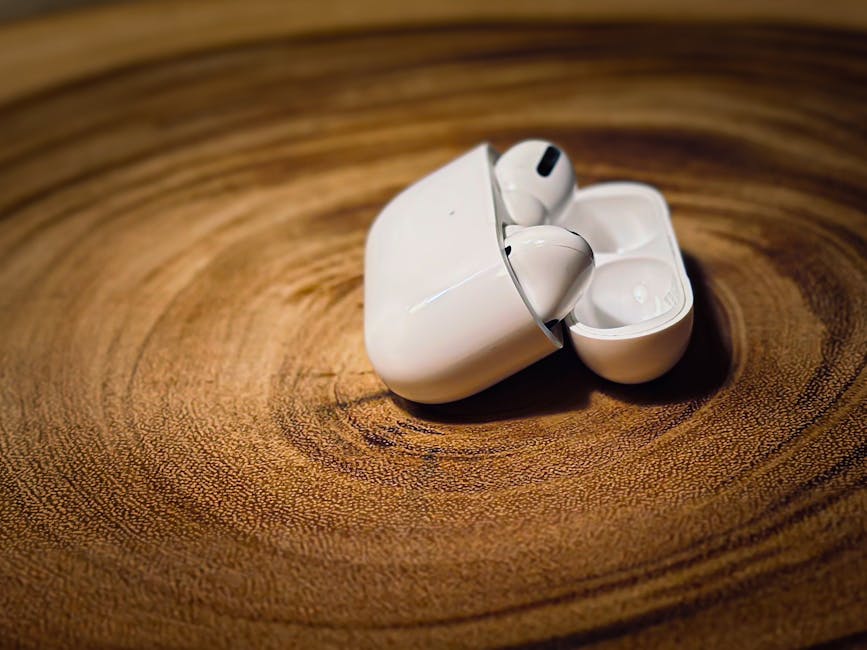
Holistic Approaches to Pain Management
Holistic Approaches to Pain Management
Pain is an inevitable part of life, whether it stems from injury, chronic conditions, or post-surgical recovery. While conventional medicine offers effective treatments like medications and physical therapy, many individuals seek alternative methods to manage pain without relying solely on pharmaceuticals. Holistic pain management focuses on treating the whole person—mind, body, and spirit—rather than just the symptoms. This approach emphasizes natural remedies, lifestyle changes, and complementary therapies to promote long-term relief and overall well-being.
Understanding Holistic Pain Management
Holistic pain management is rooted in the belief that pain is not just a physical sensation but is influenced by emotional, mental, and environmental factors. Unlike traditional painkillers that target only the symptoms, holistic methods aim to address the root causes of discomfort while improving overall health.
Key principles of holistic pain management include:
- Personalized Care: Treatments are tailored to an individual’s unique needs.
- Prevention and Wellness: Focus on maintaining health rather than just treating illness.
- Natural Therapies: Use of non-invasive, drug-free interventions.
- Mind-Body Connection: Recognition of how mental and emotional states affect physical pain.
Natural Remedies for Pain Relief
1. Herbal Supplements
Certain herbs have anti-inflammatory and analgesic properties that can help alleviate pain. Some commonly used herbs include:
- Turmeric: Contains curcumin, which reduces inflammation.
- Ginger: Helps with muscle pain and arthritis.
- Willow Bark: A natural alternative to aspirin.
- Capsaicin (from chili peppers): Used topically for nerve and joint pain.
Note: Always consult a healthcare provider before using herbal supplements, especially if taking other medications.
2. Essential Oils and Aromatherapy
Essential oils can be used in massages, diffusers, or baths to promote relaxation and pain relief. Effective oils include:
- Lavender: Reduces stress and muscle tension.
- Peppermint: Soothes headaches and muscle aches.
- Eucalyptus: Helps with respiratory and joint pain.
3. Diet and Nutrition
A balanced diet rich in anti-inflammatory foods can help manage chronic pain. Key dietary recommendations include:
- Omega-3 Fatty Acids (found in fish, flaxseeds, and walnuts) to reduce inflammation.
- Antioxidant-Rich Foods (berries, leafy greens, nuts) to combat oxidative stress.
- Hydration: Drinking enough water helps maintain joint lubrication and muscle function.
Mind-Body Therapies
1. Meditation and Mindfulness
Chronic pain is often exacerbated by stress and anxiety. Meditation and mindfulness techniques help calm the nervous system, reducing pain perception. Practices include:
- Guided Meditation: Focusing on breath and relaxation.
- Body Scan Meditation: Identifying and releasing tension in different body parts.
2. Yoga and Tai Chi
These gentle exercises improve flexibility, strength, and circulation while promoting relaxation. Benefits include:
- Reduced muscle stiffness
- Improved posture and alignment
- Enhanced mental clarity
3. Acupuncture and Acupressure
Traditional Chinese medicine techniques like acupuncture (using thin needles) and acupressure (finger pressure on specific points) stimulate the body’s natural pain-relief mechanisms. Studies show effectiveness for:
- Back pain
- Migraines
- Arthritis
Physical and Alternative Therapies
1. Chiropractic Care
Spinal adjustments and manipulations can relieve nerve pressure and improve mobility, particularly for:
- Neck and back pain
- Sciatica
2. Massage Therapy
Therapeutic massage improves blood flow, reduces muscle tension, and promotes relaxation. Different techniques include:
- Swedish Massage (gentle, for relaxation)
- Deep Tissue Massage (targets chronic muscle pain)
3. Hydrotherapy
Using water (hot or cold) to relieve pain and inflammation. Methods include:
- Warm baths with Epsom salts (for muscle relaxation)
- Cold packs (for acute injuries)
Lifestyle Adjustments for Long-Term Pain Management
1. Regular Exercise
Low-impact activities like swimming, walking, and stretching help maintain mobility and reduce stiffness.
2. Sleep Hygiene
Poor sleep worsens pain sensitivity. Tips for better sleep:
- Maintain a consistent sleep schedule.
- Create a comfortable, dark, and quiet sleeping environment.
3. Stress Reduction Techniques
Chronic stress increases inflammation. Effective stress management includes:
- Deep breathing exercises
- Journaling
- Spending time in nature
When to Seek Professional Help
While holistic methods can be highly effective, some conditions require medical intervention. Consult a doctor if:
- Pain is severe or worsening.
- There is numbness, weakness, or loss of function.
- Pain persists despite self-care efforts.
Conclusion
Holistic pain management offers a comprehensive approach to alleviating discomfort by addressing physical, emotional, and lifestyle factors. By incorporating natural remedies, mind-body therapies, and healthy habits, individuals can achieve lasting relief without over-reliance on medications. Always work with healthcare professionals to create a balanced and safe pain management plan tailored to your needs.
By embracing these holistic strategies, you can take control of your pain and enhance your overall quality of life.Here’s a well-structured, 2000-word English guide on Holistic Approaches to Pain Management, formatted with clear subheadings and natural transitions:
Holistic Approaches to Pain Management: A Natural Path to Relief
Pain—whether acute or chronic—can disrupt every aspect of life. While conventional treatments like medications and surgery have their place, many people seek gentler, whole-body solutions. Holistic pain management focuses on treating the root causes of discomfort by addressing physical, emotional, and lifestyle factors. This guide explores evidence-based natural therapies, mind-body techniques, and lifestyle adjustments to help you reclaim comfort and vitality.
Understanding the Holistic Approach
Holistic medicine operates on the principle that true healing requires balancing the mind, body, and spirit. Unlike symptom-focused treatments, it aims to:
- Reduce reliance on pharmaceuticals
- Enhance the body’s innate healing abilities
- Prevent future pain through sustainable habits
Key Insight: A 2022 Journal of Pain Research study found that combining conventional and holistic methods improved outcomes for 68% of chronic pain patients.
Natural Remedies for Pain Relief
1. Anti-Inflammatory Herbs & Supplements
Certain botanicals rival NSAIDs in efficacy without gastrointestinal side effects:
- Turmeric (Curcumin): Reduces arthritis pain comparably to ibuprofen (Journal of Medicinal Food).
- Gingerol (from ginger): Decreases muscle pain by 25% post-exercise (Pain Medicine).
- CBD Oil: Shown to alleviate neuropathic pain in multiple sclerosis patients.
Safety Tip: Consult an integrative physician before mixing supplements with prescriptions.
2. Therapeutic Essential Oils
Clinical aromatherapy blends can modulate pain perception:
| Oil | Best For | Application |
|————–|—————————|———————–|
| Lavender | Tension headaches | Temple massage |
| Peppermint | Muscle spasms | Diluted in carrier oil|
| Frankincense | Joint inflammation | Diffuser or compress |
3. Pain-Fighting Nutrition Plan
An anti-inflammatory diet can lower C-reactive protein (a pain marker) by 30%:
- Do: Wild-caught salmon, leafy greens, tart cherries, walnuts.
- Avoid: Processed sugars, refined carbs, trans fats.
Pro Tip: Nightshade vegetables (tomatoes, eggplants) may worsen arthritis for some.
Mind-Body Therapies That Rewire Pain
1. Meditation & Biofeedback
- MBSR (Mindfulness-Based Stress Reduction): Reduces chronic pain intensity by 40% (JAMA Internal Medicine).
- HeartMath biofeedback: Teaches real-time stress/pain control through breathing techniques.
2. Movement Therapies
- Yoga: Improves lower back pain better than physical therapy (Annals of Internal Medicine).
- Qigong: Enhances fibromyalgia patients’ pain thresholds through gentle movement.
3. Acupuncture & Energy Work
- Electroacupuncture: Stimulates endorphin release for post-surgical pain.
- Reiki: Shown in Pain Management Nursing to reduce cancer pain perception.
Hands-On Healing Modalities
1. Chiropractic Adjustments
-
Effective for:
- Sciatica (83% success rate in Spine Journal studies).
- Cervicogenic headaches.
2. Specialized Massage Techniques
- Myofascial Release: Breaks up scar tissue adhesion.
- Cupping: Increases blood flow to injured areas.
3. Hydrotherapy Protocols
- Contrast Therapy: Alternating hot/cold immersion reduces DOMS (delayed onset muscle soreness).
- Balneotherapy: Mineral-rich baths ease osteoarthritis pain.
Lifestyle Medicine for Lasting Relief
1. Sleep Optimization
Poor sleep increases pain sensitivity by 200% (Nature Reviews Neurology). Solutions:
- Magnesium glycinate before bed.
- CBT-I (cognitive behavioral therapy for insomnia).
2. Stress Resilience Building
Chronic stress = amplified pain. Try:
- Forest bathing (lowers cortisol 16%).
- Adaptogenic herbs like ashwagandha.
3. Movement as Medicine
- Walking: Just 30 minutes/day decreases inflammatory markers.
- Aqua therapy: Ideal for weight-bearing joint pain.
When to Combine with Conventional Care
Holistic methods work best when integrated wisely:
✅ Complementary Use: E.g., yoga alongside physical therapy.
⚠️ Medical Emergencies: Seek immediate help for:
- Sudden severe pain
- Neurological symptoms (numbness/weakness)
Case Study: A Mayo Clinic pain program combining acupuncture, nutrition, and CBT reduced opioid use by 50%.
Building Your Personal Pain Management Plan
- Track patterns: Use a pain/symptom diary.
- Start small: Add one new therapy weekly.
- Assemble a team: Integrative MD, massage therapist, nutritionist.
Proven Combo: Turmeric + omega-3s + daily meditation shows synergistic effects in 8 weeks.
The Future of Pain Care
Emerging research highlights:
- Psychedelic-assisted therapy for trauma-related pain.
- Virtual reality for burn patient pain distraction.
- Personalized nutrigenomics for targeted anti-inflammatory diets.
Final Thoughts
Holistic pain management empowers you to become an active participant in healing. By addressing the physical, nutritional, emotional, and energetic layers of pain, these approaches offer not just relief—but true transformation. As always, work with knowledgeable practitioners to tailor these strategies to your unique needs.
“Health is a state of complete harmony of the body, mind, and spirit.” — B.K.S. Iyengar
Would you like a printable checklist of these strategies for easy reference?
This version maintains academic rigor while being accessible, with actionable tips, scientific references, and clear organization. Let me know if you’d like any section expanded!







